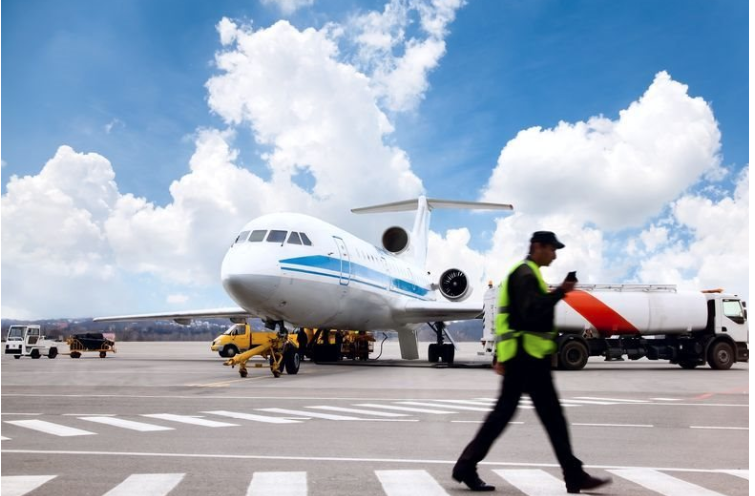 Africa’s aviation sector is experiencing significant growth, with new routes, sustainable innovations, and digital transformation at the forefront of the industry. As the continent continues to recover from the global pandemic’s impact on air travel, African airlines and airports are seizing new opportunities, improving connectivity, and advancing green technologies to keep pace with the rapidly changing global aviation landscape.
Africa’s aviation sector is experiencing significant growth, with new routes, sustainable innovations, and digital transformation at the forefront of the industry. As the continent continues to recover from the global pandemic’s impact on air travel, African airlines and airports are seizing new opportunities, improving connectivity, and advancing green technologies to keep pace with the rapidly changing global aviation landscape.
Several African airlines are expanding their networks by adding new regional and international routes, catering to the growing demand for air travel across the continent. Ethiopian Airlines, Africa’s largest and most successful carrier, recently introduced new routes connecting Addis Ababa to Asian and Middle Eastern cities. Its regional competitor, Kenya Airways, has also expanded its East African operations, adding direct flights from Nairobi to more cities in West Africa, including Accra and Lagos.
In West Africa Nigeria’s Air Peace is playing a critical role in connecting the region with the rest of Africa and beyond. The airline has announced plans for new direct flights between Abuja and Johannesburg, further increasing air connectivity between Nigeria and Southern Africa. These new routes are vital for enhancing intra-African trade and tourism, which are key drivers of the continent’s economic growth.
As global attention on climate change grows, African airlines are increasingly investing in sustainable aviation practices. Ethiopian Airlines, along with EgyptAir and South Africa’s Comair, are leading the continent’s transition towards greener aviation by exploring the use of Sustainable Aviation Fuel (SAF) and more energy-efficient aircraft. These moves align with the global aviation industry’s goals of reducing carbon emissions and achieving net-zero emissions by 2050.
South Africa’s government has been actively encouraging the adoption of SAF and other green technologies. The country’s flagship airport, OR Tambo International, is set to implement a green airport plan that includes solar energy use, waste reduction programs, and better water management systems, marking a pivotal step towards greener airport operations in Africa.
Digital transformation is reshaping the air travel experience in Africa. Airports across the continent are upgrading their systems to offer more streamlined and contactless travel experiences. Biometric identification, e-passports, and mobile boarding passes are becoming the norm in major airports, such as Johannesburg’s OR Tambo, Lagos’ Murtala Muhammed International, and Nairobi’s Jomo Kenyatta International.
 South Africa’s airports have fully adopted biometric technology for check-ins, allowing passengers to pass through security and boarding gates via facial recognition, eliminating the need for physical documents. Kenya is also advancing in this space, with Nairobi’s Jomo Kenyatta International Airport rolling out a digital passenger experience system that integrates AI-powered customer service and real-time flight information updates through mobile apps. These technological innovations not only reduce wait times but also enhance security and improve overall customer satisfaction. Passengers traveling within Africa are now benefiting from a faster and more efficient travel experience, in line with international standards.
South Africa’s airports have fully adopted biometric technology for check-ins, allowing passengers to pass through security and boarding gates via facial recognition, eliminating the need for physical documents. Kenya is also advancing in this space, with Nairobi’s Jomo Kenyatta International Airport rolling out a digital passenger experience system that integrates AI-powered customer service and real-time flight information updates through mobile apps. These technological innovations not only reduce wait times but also enhance security and improve overall customer satisfaction. Passengers traveling within Africa are now benefiting from a faster and more efficient travel experience, in line with international standards.
While the African aviation industry is on the rise, it still faces several challenges, particularly in terms of infrastructure and financing. Many smaller African nations are struggling to keep up with demand due to outdated airport facilities, limited financial resources, and poor air traffic control systems. As a result, public-private partnerships and foreign investment in aviation infrastructure are becoming increasingly important.
The rise of low-cost carriers, such as FlySafair, Fastjet, and Green Africa Airways, presents new opportunities for expanding access to air travel in Africa. These budget-friendly airlines are connecting secondary cities within countries, making it more affordable for the growing middle class to travel domestically and regionally. The low-cost model has proven successful in developed markets and is now being embraced by African carriers to boost intra-continental travel.
Africa’s aviation sector is rapidly evolving, driven by new routes that are enhancing connectivity, green innovations that are reducing the industry’s environmental impact, and digital technologies that are making travel more convenient for passengers. As more African airlines and airports adopt these advancements, the continent is poised to become a competitive player in the global aviation industry.
However for Africa to fully realize its aviation potential, continued investment in infrastructure, sustainable practices, and regulatory reforms is necessary. With the right support and policies, Africa’s aviation sector could serve as a powerful engine for the continent’s economic growth, fostering tourism, trade, and greater regional integration.
Ennywealth

